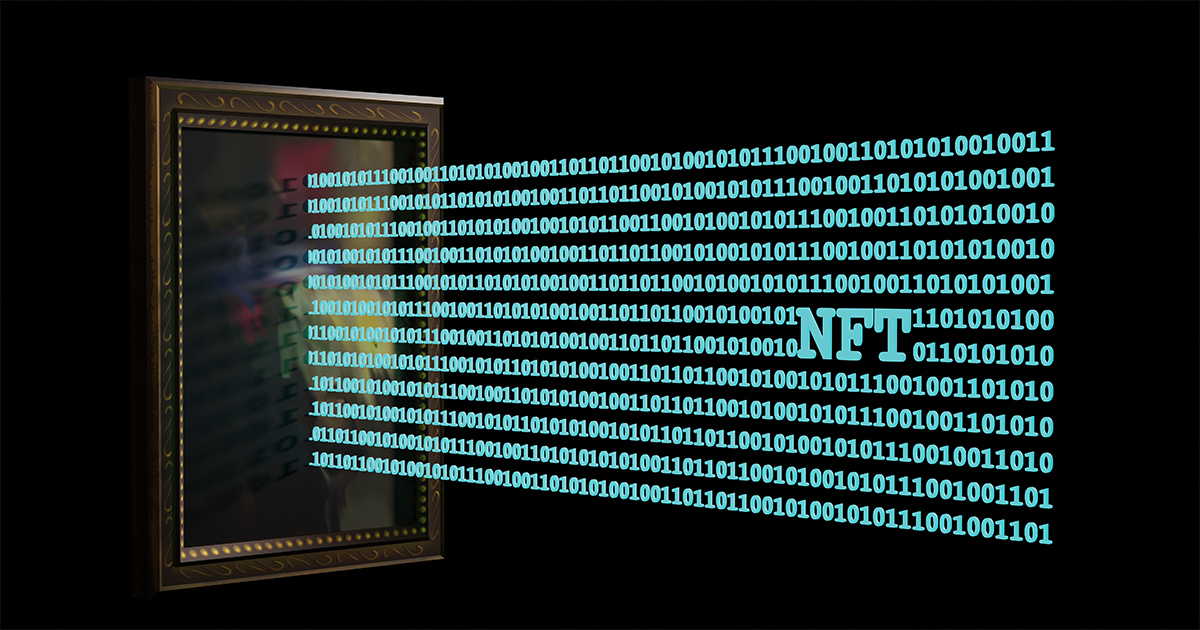
NFTs are something social satirist William Gibson might have invented. The couture of attaching the value of a Manhattan apartment to a digital asset like a jpeg seems to signify a culture gone ever so slightly insane.
Yet the $69 million and change paid at auction in March for Everydays: The First 5000 Days, a collage by US artist Mike Winkelmann (aka Beeple) has the Technorati scratching their heads. NFTs are after all just tokens representing ownership of digital objects that anyone can download in seconds.
“The idea of paying for the symbolic ownership of a digital image that lives somewhere on the web and can be captured on a screenshot or right-click-download, is so alien it seems either idiotic or ironic,” says Gian Volpicelli, a senior editor at Wired.
To make the NFT market even harder to understand, it seems the value of digital art is not judged on quality alone. Jamie Burke, founder and CEO of blockchain investment firm Outlier Ventures, told Wired that he made the mistake of buying visually striking pieces when he began dabbling in NFTs.
“A lot of people would buy low-aesthetic, self-referential stuff,” Burke says: NFTs linked to memes, cryptocurrency cartoons, or badly-drawn characters. He says he realized that in this sphere, aesthetics count for nothing.
“I moved from aesthetics to memetics. NFTs are a form of social media: it’s not just something to put on a wall. It’s more like a membership of a club or cult.”
READ MORE: The zany ascent of NFT art collectors (Wired)
Yet proponents of NFT purport to be solving the near-impossibility of monetizing digital artworks.
“As a mechanism, NFTs make it possible to assign value to digital art, which opens the door to a sea of possibility for a medium that is unbridled by physical limitations,” Noah Davis, an art specialist at Christie’s, told Wired.
The innate difference between NFT and other forms of crypto make it uniquely suited to digital art, argues Volpicelli.
THE ABCs of NFTs:
Are NFTs just more hype, or are they actually the building blocks of the creator economy? Understanding blockchain technology can seem like a lot, but NAB Amplify has the expert knowledge and insights you need to remain at the top of the intersection of art and technology:
- NAB Amplify’s NFT Primer
- What’s the Real Future of the NFT Crypto Art Market?
- Weird Science: The Connection Between NFTs and… Human Nature?
- NFTs: Digital Dream or IP Nightmare?
- NFTs: Content Strategy or Digital Craze?
Cryptocurrencies just like conventional currencies are by nature made up of perfectly swappable, units: my two bitcoins are worth the same as your two bitcoins, he explains.
In other words, it is fungible.
Currency and crypto units are also, fractionable into smaller units — dollars can be broken down to cents, bitcoins to particles called satoshis.
NFTs on the other hand (which are cryptocurrency assets developed according to special Ethereum standards ERC-721 and ERC-1155), are unique and indivisible; fungible.
“Where a bitcoin is comparable to a dollar bill, an NFT can be likened to a cat, a sculpture, or a painting: you can’t sell part of it without spoiling the whole, and its value is rather subjective,” he says. “Those characteristics render NFTs a good metaphor for art.”
Digital art, specifically.
Sure, everyone can download Beeple’s images from his Instagram feed, but that is missing the point, says Vincent Harrison, a New York gallerist quoted in Wired. “Anyone can see pictures on the internet of the most expensive artworks; posters are sold in museums,” he says. “But it’s the ownership that creates value.”
“Here, there are no gatekeepers. The accessibility that you have to these NFT platforms for the artists themselves is revolutionary.”
— Twobadour
And with NFTS you have ownership on the blockchain, so that ownership is transparent for everyone to see. Even better, blockchains are also able to keep track in a secure, immutable way, of how a token originated and changed hands over time.
Digital artists can take advantage of this since NFTs can be designed to pay their creators a cryptocurrency fee every time they change hands. If a buyer of an artist’s NFT resells it (a key trend in the speculative NFT market), the artist automatically receives a percentage of the price paid. It’s a royalty in perpetuity unlike any transaction in the traditional art world.
The nature of the technology is breaking down other barriers to the elite art scene.
“Here, there are no gatekeepers,” says Twobadour, one-half of the duo that bought Beeple’s $69 million piece at Christie’s. “The accessibility that you have to these [NFT] platforms for the artists themselves is revolutionary.”
READ MORE: The bitcoin elite are spending millions on collectable memes (Wired)
For example, the Museum of Crypto Art is an NFT art gallery hosted on a VR platform featuring a “permanent gallery” of 160 artworks including Beeple’s Into the Ether #198.
Digital artist Andrea Bonaceto thinks that the method might even spur new forms of digital art blending digital imagery, music and technology.
“You can create hybrids of art and music, or of art and literature and link both of them to a token. You can use smart contracts [self-executing routines that can be programmed onto a blockchain], so that the artwork changes over time,” he says. “This totally opens up an artist’s creativity.”
Peak NFT?
The sale of Beeple’s $69,346,250 NFT may be the currency’s high water mark, but the craze is not going away. The NFT market tracker NonFungible.com recorded more than 45,000 new wallets (an app needed to purchase NFT) interacting for the first time with the NFTs in April to June.
READ MORE: What does the NFT Ecosystem look like after the Boom? (NonFungible)
“These figures point to the evidence that there has been a very sharp increase in the number of new addresses active in the NFT ecosystem. This is due in part to the record sale of Beeple as well as the global media coverage of NFTs, bringing a wave of new users into the ecosystem.”

